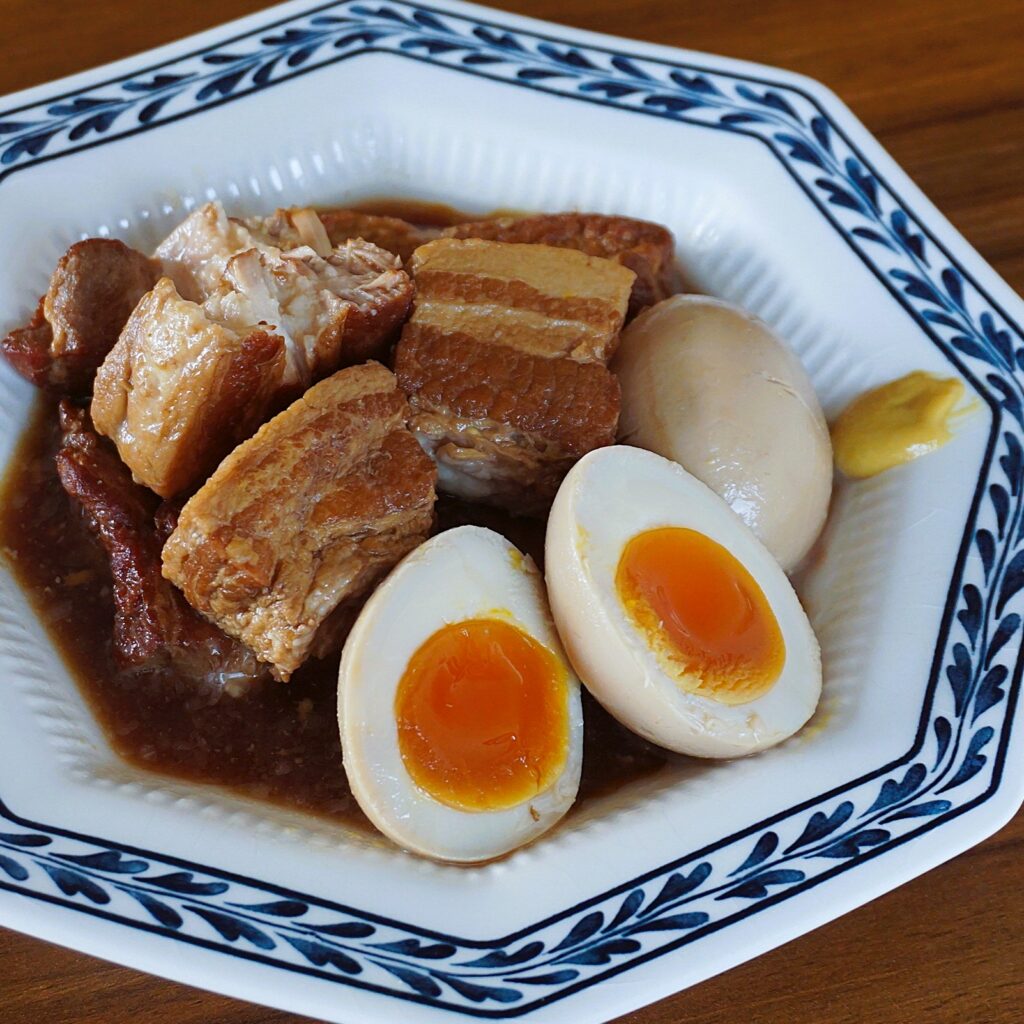
豚の角煮 (buta no kakuni)
What kind of dish is buta no kakuni??
Butano kakuni is pork belly stewed in a pressure cooker. To give an example, it’s easy to understand that it’s Japanese-style spare ribs. Butano kakuni is often referred to overseas as Japanese braised pork belly.
Kakuni is well seasoned, so it goes well with rice. It can be used as a topping for ramen, or cut into small pieces and used as a fried rice ingredient.
If you double the seasonings in this recipe and let the boiled eggs soak in the broth for a while, you can make a delicious ajitama. The meat flavor will soak into the regular ajitama and it will taste incredible!
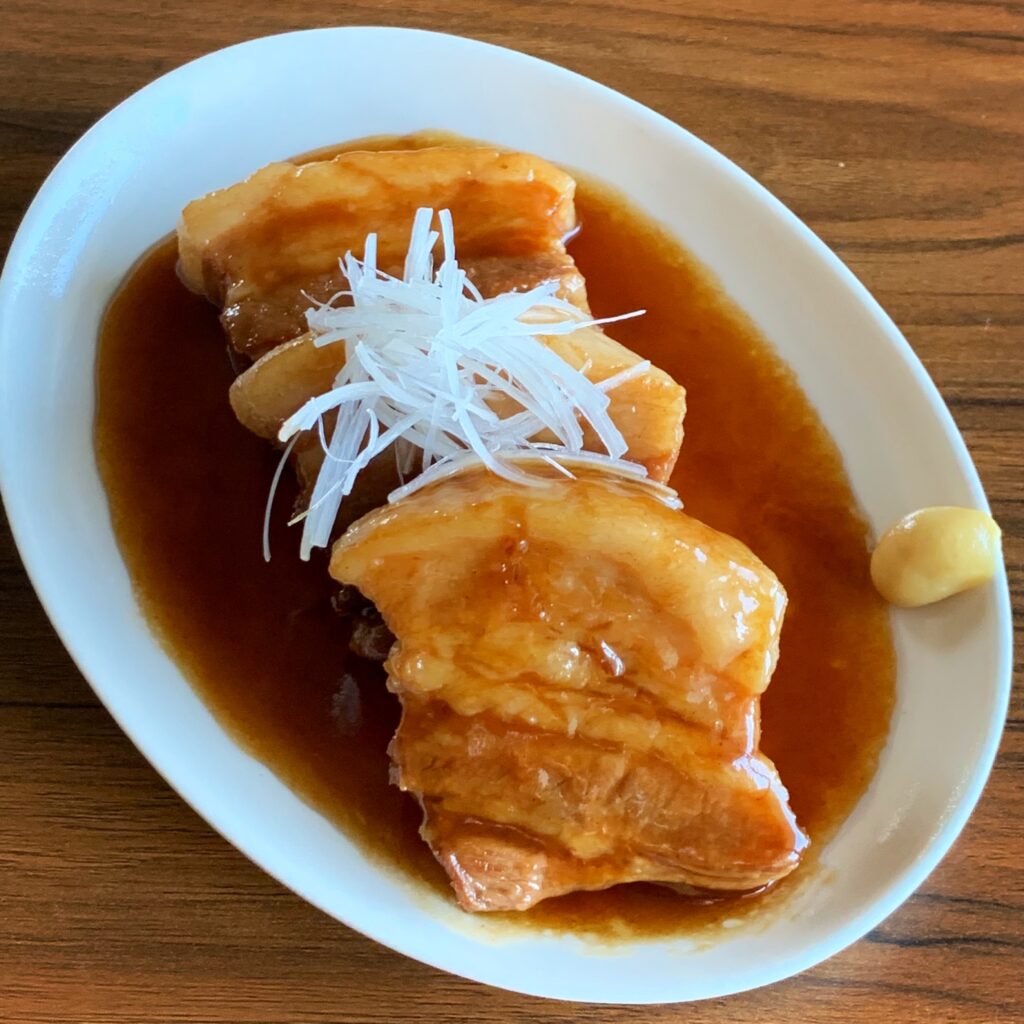
Cooking tips for butano kakuni recipe
It takes a little skill to make the kakuni soft and melting in your mouth. But anyone with a pressure cooker can make it well.
The most popular dish that can be made with a pressure cooker is kakuni, and I tried it as soon as I bought a pressure cooker.
When meat is heated, it becomes hard at about 65 degrees. However, when the temperature rises to about 80 degrees, the collagen starts to gelatinize.
By simmering it at around 80 degrees for around two hours, it will develop the soft texture that is characteristic of kakuni.
If the meat is exposed to air or the temperature is not properly controlled, it will end up with a dry texture.
By using a pressure cooker, it reaches 80 degrees quickly, and because it is sealed, the meat does not become dry.
The reason for lightly searing the surface of pork belly before stewing is to prevent the meat from losing its shape and to remove any unpleasant odors and excess fat.
(If you are not using a pressure cooker, it is said that it is best to boil the meat in plenty of water for about 30 minutes before adding the seasonings. This is because adding salt makes it difficult for the meat to become tender.)
By the way, when I made it with pork loin once, the meat was hard and dry. It seems that pork loin is not suitable for cooking for long periods of time. The best part of meat to use for kakuni is pork belly.
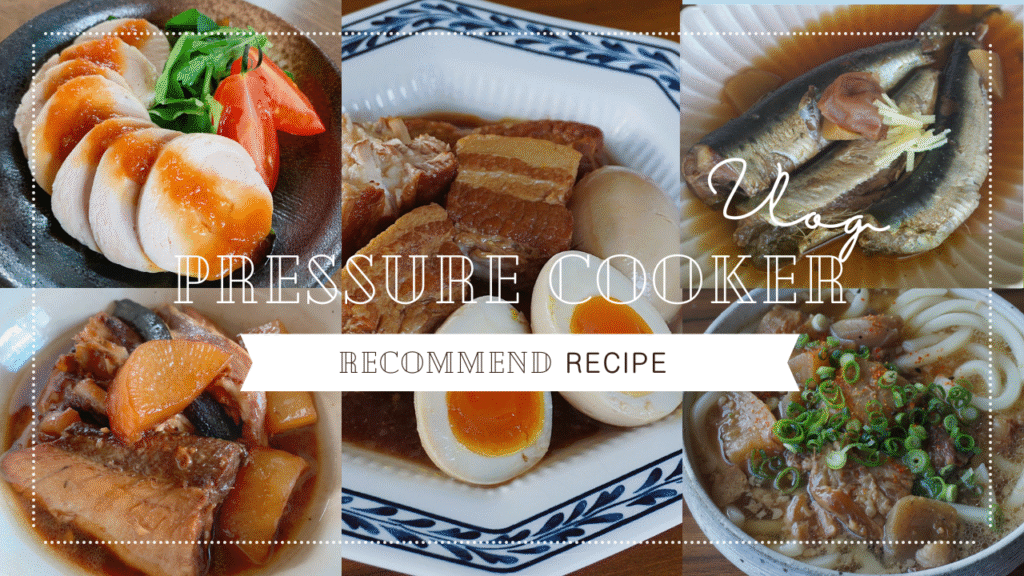
NUTRITION FACTS:Buta no kakuni (Braised pork belly)

- 3228 Calories Protein 119.0 g Total Fat 296.1 g Total carbohydrates 49.9 g Sodium 11.5 g
INGREDIENTS:Buta no kakuni (Braised pork belly )3SERVINGS)
- Pork belly 700g
- ☆Soy sauce 70g
- ☆Sugar 35g
- The green part of white leek 1bundle
- Ginger 10g
- Water 300g
- 3Eggs
- Japanese mustard 3g
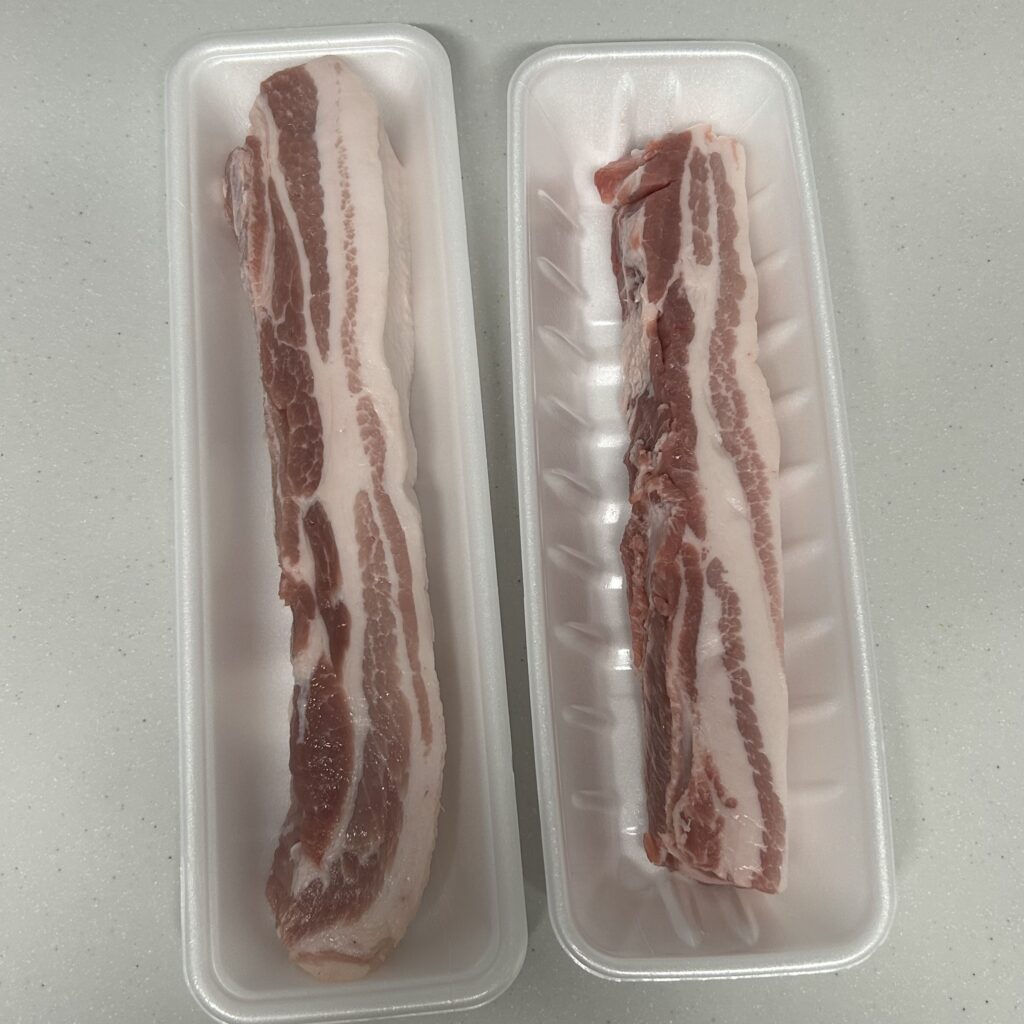
How to make Buta no kakuni (Braised pork belly )
- Brown the pork belly on all sides in a frying pan.
- Cut the pork belly into quarters (approximately 5cm wide).
- Brown the pork belly cut sides.
- Wipe off any remaining oil from the frying pan with paper towels.
- Place the pork belly in a tray and pour boiling water over it to remove excess fat.
- Put soy sauce and sugar in a pot and heat over the stove, dissolving the sugar. Cook until a deep caramel color is achieved.
- Peel the ginger and thinly slice it.
- Add the pork belly to the pot and simmer for a few minutes, then add the green part of the Japanese white leek, sliced ginger, and water and simmer. I pressure cook it for 25 minutes.
- Put cold eggs in boiling water and boil for 8-12 minutes.
- Place the eggs in cold water and peel them.
- Once the pressure cooker has released the pressure, open the lid, add the boiled eggs, and simmer for 10 minutes.
- Place the kakuni, eggs, and broth in a deep container and refrigerate overnight.
- The fat will solidify at the top of the container, so remove it. When kakuni is cooled, the fat that solidifies can be used as lard to make ramen soup!
- Warm up when ready to eat.
- Add Japanese mustard to taste.
Braised pork belly can be frozen, which gives it an even more melt-in-your-mouth texture.
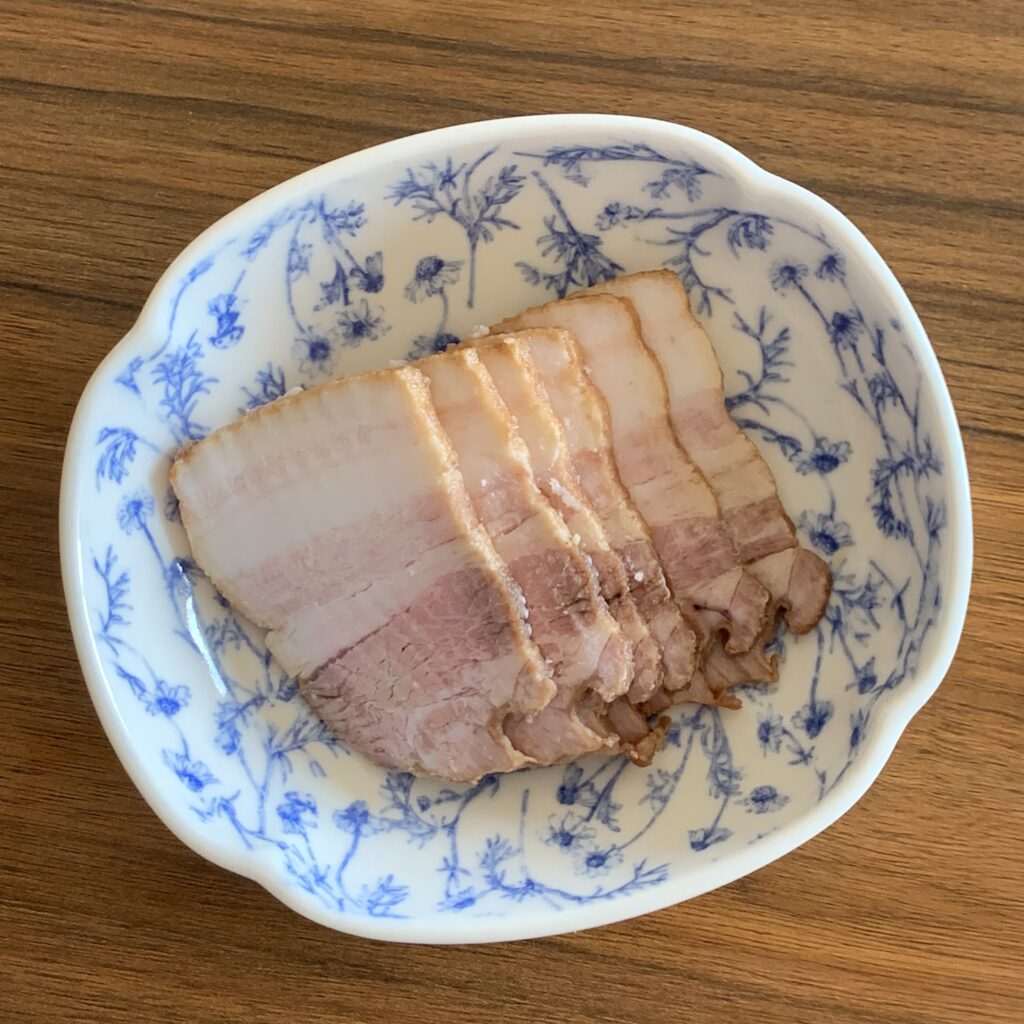
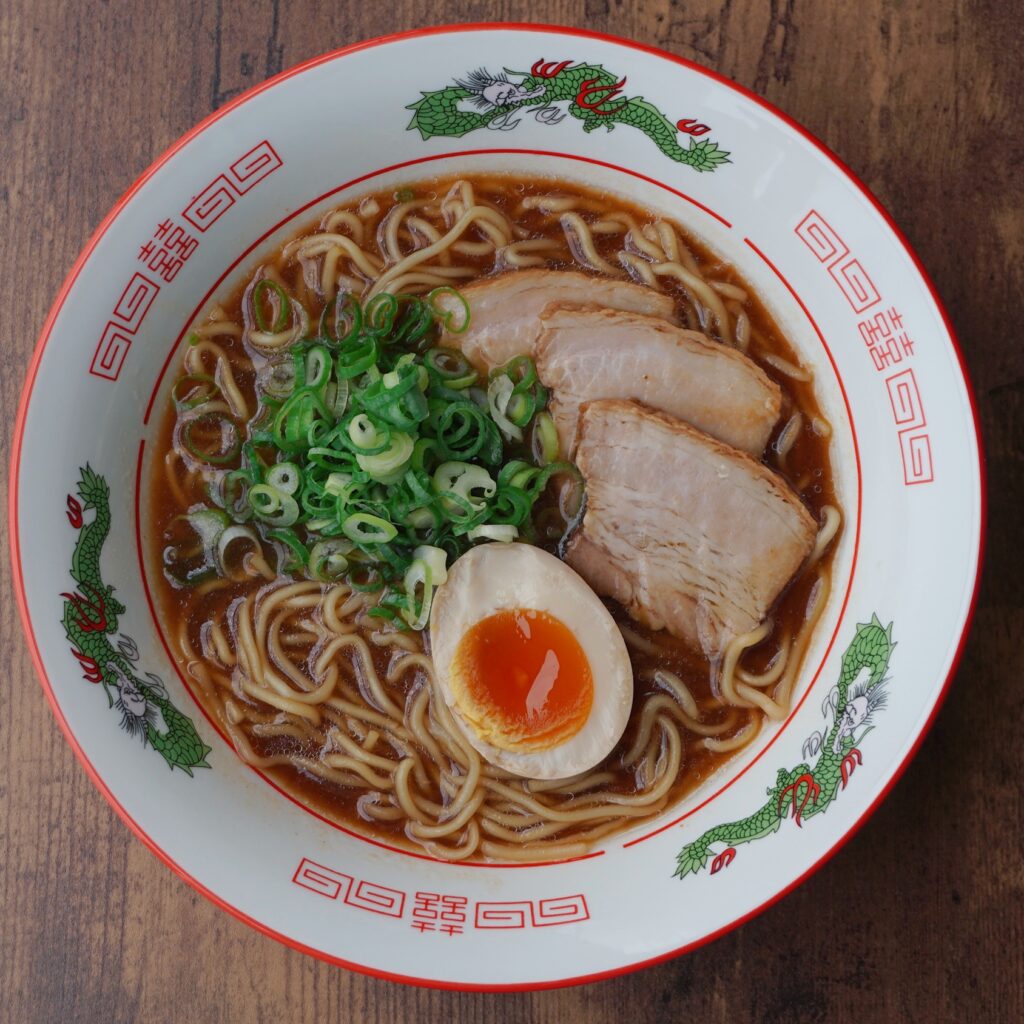
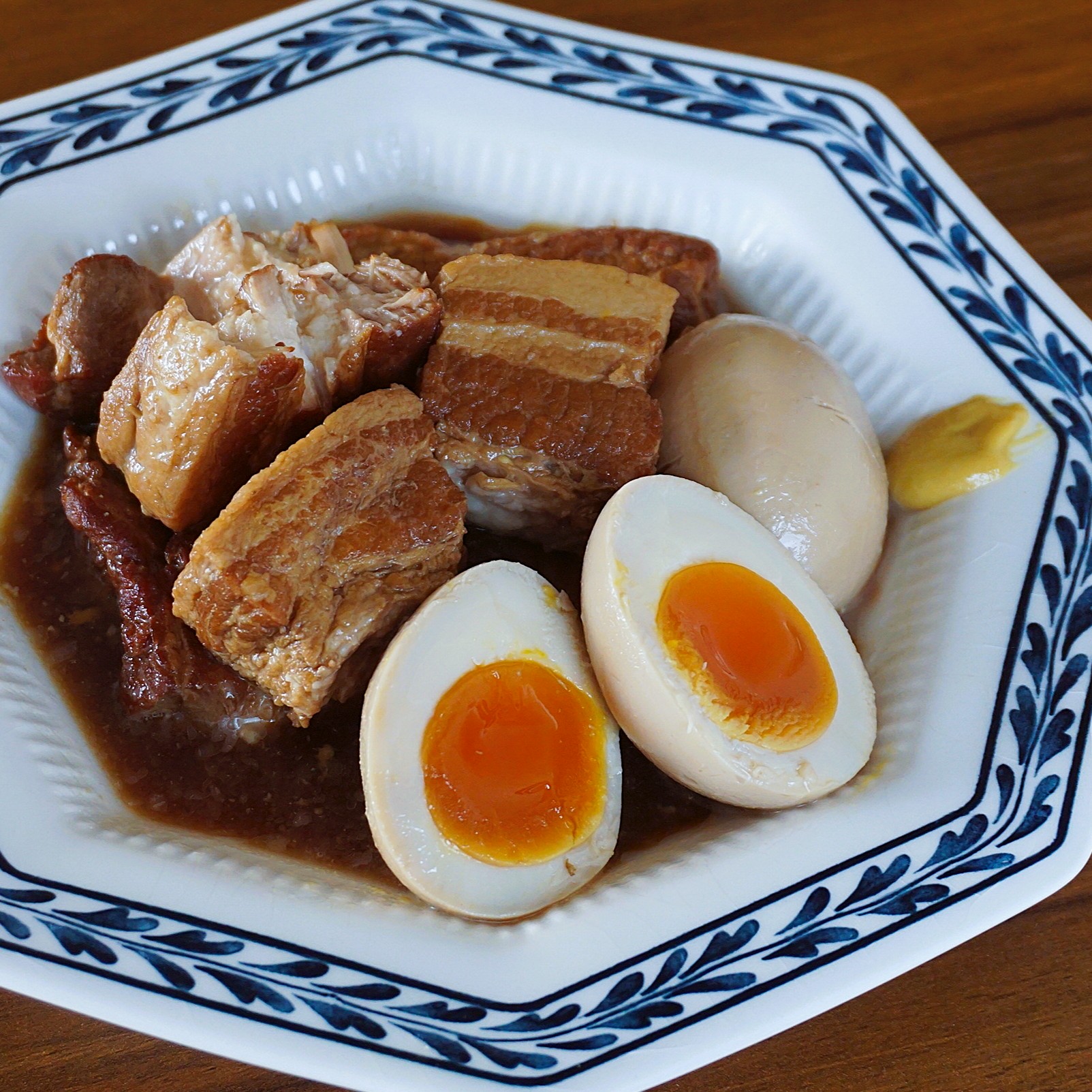
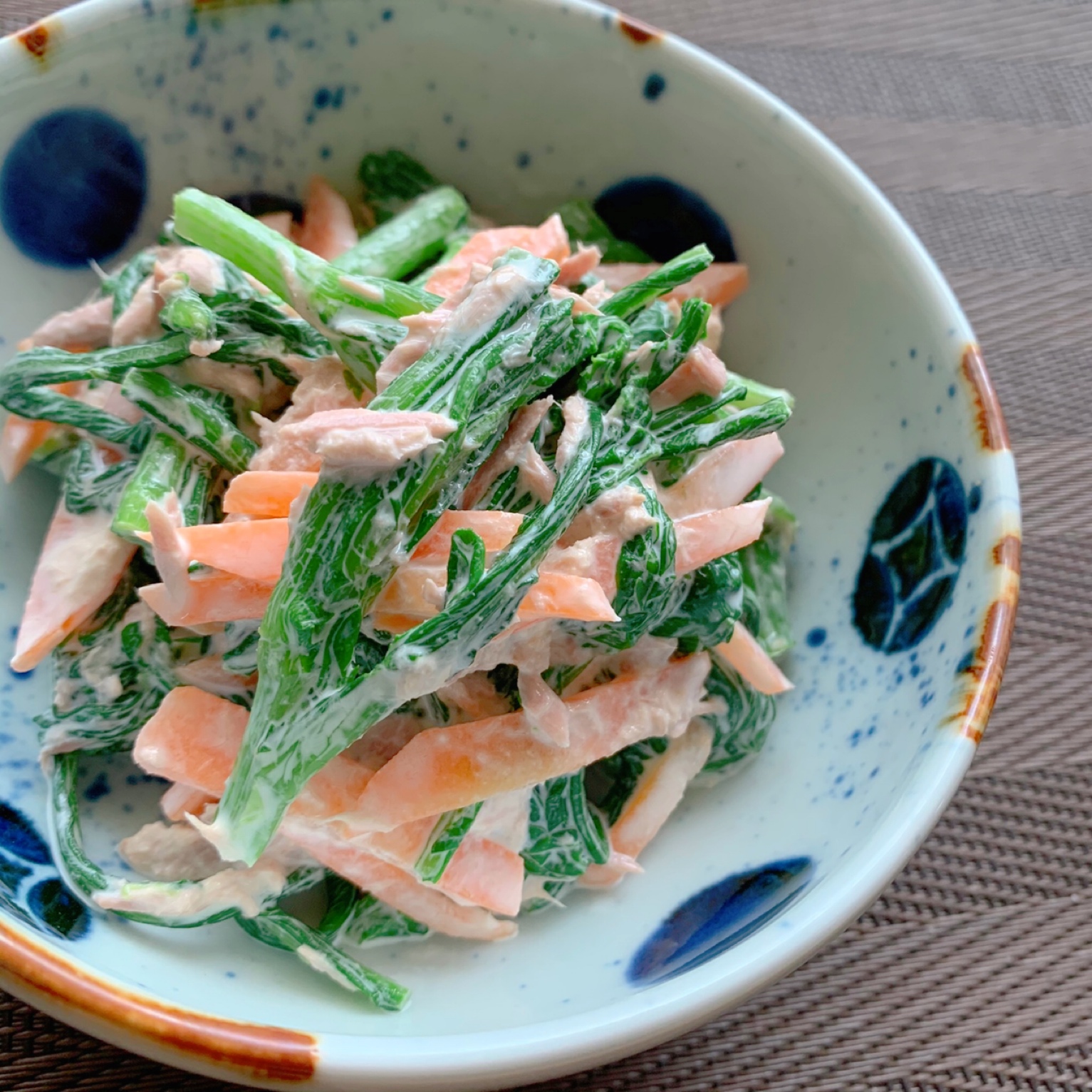
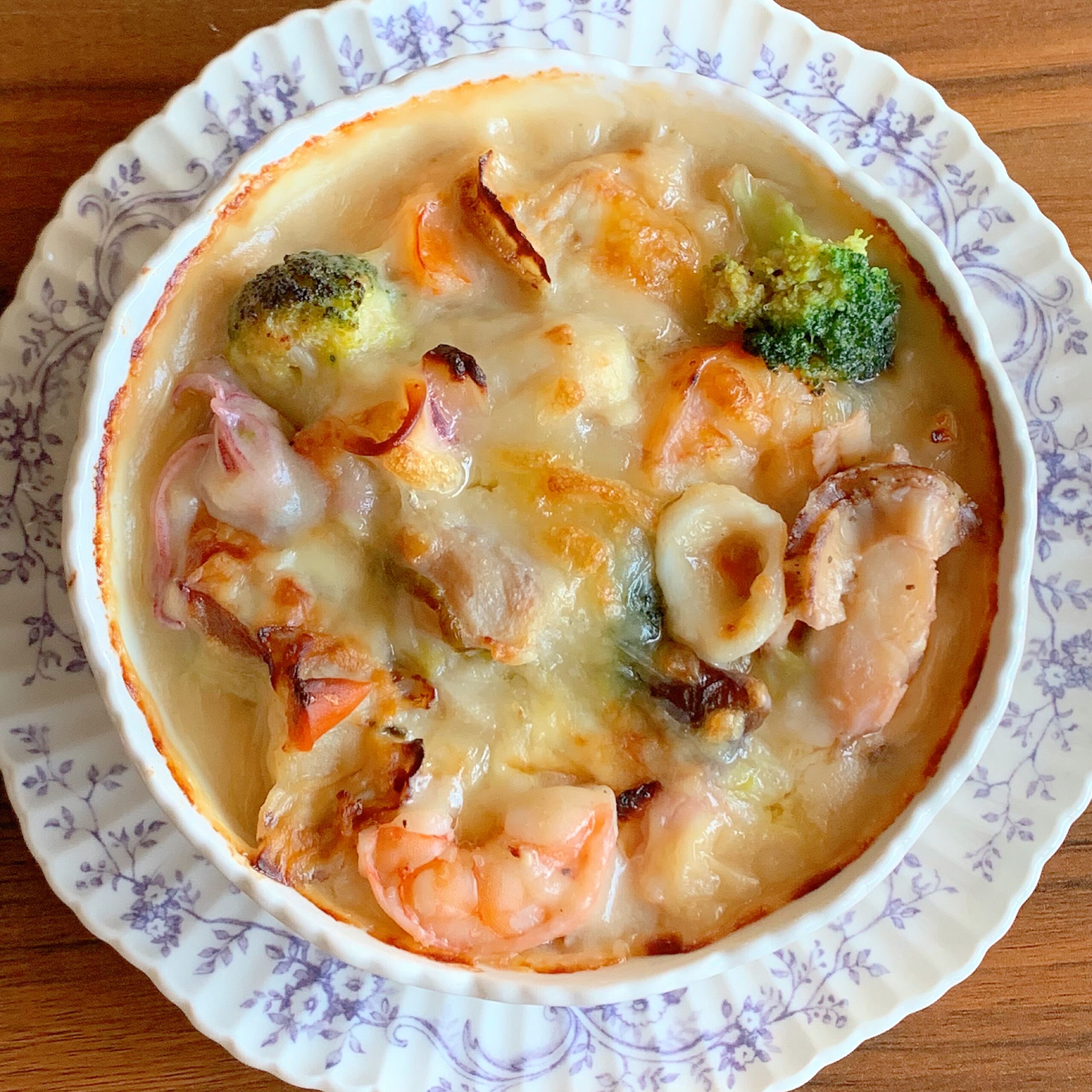
コメント